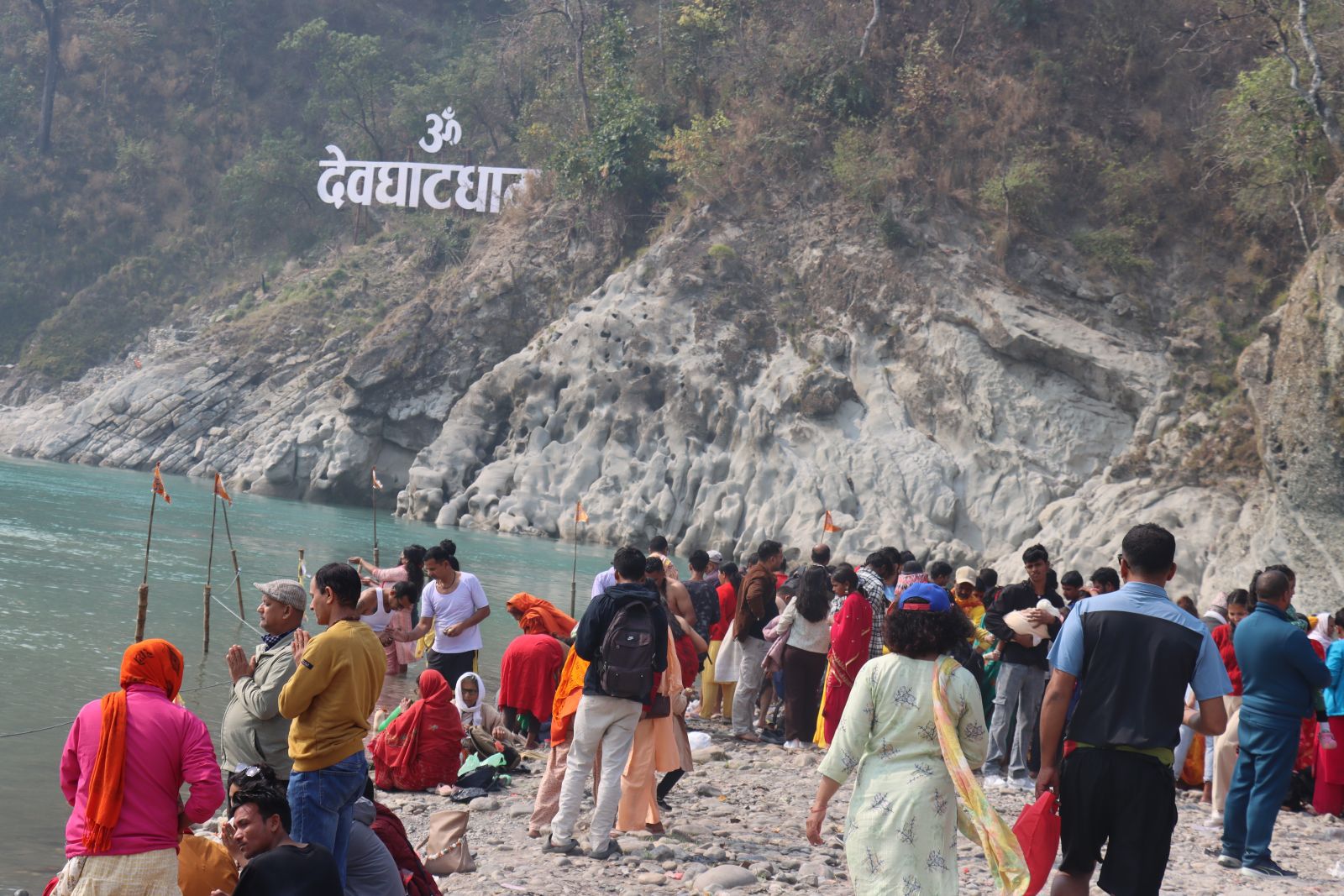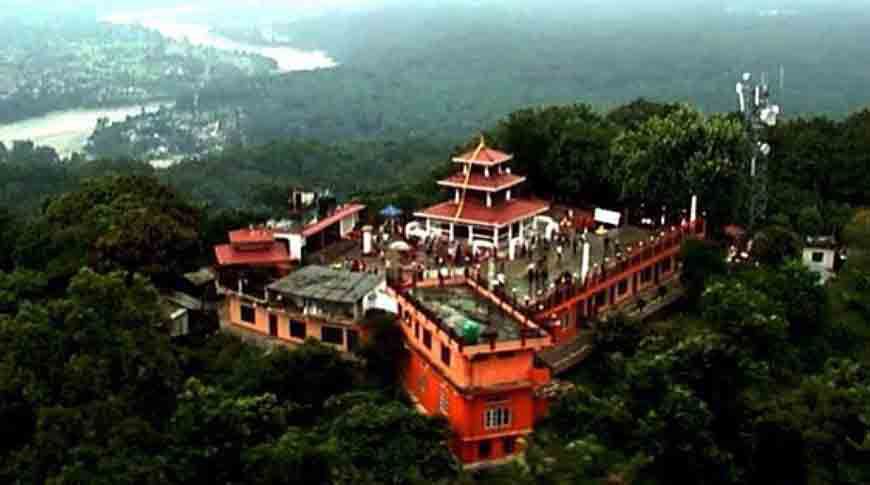Devghat Dham: Nepal’s Hidden Prayag of Purity and Pilgrimage




In the gentle embrace of green hills and flowing rivers, where the Trishuli meets the Kaligandaki, lies a sacred land unlike any other—Devghat Dham. Tucked away in the heart of Chitwan, this peaceful town is more than just a pilgrimage site; it is a place where stories live, rivers speak, and souls come searching for meaning.
Often called the “Prayag of Nepal,” Devghat isn’t just a destination—it’s a feeling. As pilgrims arrive barefoot and hopeful, the air hums with chants, bells, and birdsong. During major festivals like Maghe Sankranti, the place transforms into a vibrant spiritual gathering, where thousands take holy dips and pray at sunrise. Yet even on quieter days, Devghat offers something rare: peace. A kind of peace that settles into your heart and reminds you of something eternal.
Where Mythology Meets Memory
The roots of Devghat reach deep into the sacred texts of Hinduism. According to the Ramayana, this is where Sita, after her exile from Ayodhya, found refuge in the forests. At the revered Valmiki Ashram, she gave birth to her twin sons, Luv and Kush. The sage Valmiki himself, the poet-saint who composed the Ramayana, is believed to have meditated and written under the canopy of these very trees.
For centuries, sages, yogis, and truth-seekers have journeyed here—drawn not by fame, but by the whisper of the divine. The land is known in ancient scriptures as a tapobhumi, a sacred ground for deep penance and awakening. Even today, if you sit quietly by the riverside or under the shade of an ashram, you’ll feel it—that invisible stillness that speaks louder than words.
A Living Legacy of Faith
Devghat is not a museum of the past. It is alive. Every temple, cave, and dharmashala tells a story still unfolding. The Valmiki Ashram continues to draw pilgrims retracing Sita’s journey. The Devghat Shivalaya, nestled in a tranquil forest, invites seekers of Lord Shiva. The Ram-Janaki Temple honors the timeless bond of love and struggle, while the Hanuman Mandir stirs the heart with its energy of loyalty and strength.
Sacred caves like Siddha Baba Cave and Valmiki Rishi Cave remain havens for meditation. The traditional stone carvings and timeless Nepali architecture give the entire area a sacred, grounded feel. And yet, this spiritual beauty is matched by its humility. Devghat does not shout—it listens. It welcomes everyone, no matter who they are or where they come from.
A Sacred Place in Need
For all its spiritual richness, Devghat still struggles with basic needs. Roads become difficult, even dangerous, during the monsoon. Clean drinking water, proper toilets, affordable lodging, and emergency medical services are limited. On peak days like Maghe Sankranti, the area overflows with pilgrims—but lacks the infrastructure to support them.
Despite efforts from local municipalities and committed community groups, Devghat has not yet received the national-level attention it deserves. It holds the potential to be a world-renowned spiritual destination, yet development remains slow, scattered, and underfunded. The challenge is not just growth—but growing in a way that respects the soul of the place.

Som Nath Sapkota
Between Preservation and Progress
Devghat is at a delicate turning point. Unregulated development, pollution, and lack of maintenance threaten its sacred environment. Ancient temples and caves are slowly deteriorating. There is no central authority to oversee its long-term planning. While spiritual tourism is growing across the globe, Devghat risks being left behind—or worse, being commercialized beyond recognition.
If we do not act now, we may lose more than heritage. We may lose a living connection to the very values—peace, faith, humility—that define Nepali culture.
A Vision for the Future
With the right vision and heart, Devghat can become a model of eco-spiritual tourism—a space that welcomes modern pilgrims without losing its sacred soul. A master plan should be created, bringing together local leaders, national planners, spiritual institutions, and international partners. Infrastructure can be improved without harming the environment—eco-lodges, clean toilets, safe paths, and first-aid centers should be prioritized.
Culturally, Devghat has enormous potential. Imagine annual Ramayana festivals, meditation retreats, heritage walks, or river clean-up drives where locals and visitors come together in service and celebration. Digital guides, mobile apps, and storytelling programs can help people engage more deeply with Devghat’s rich past. Linking Devghat to the broader Ramayana Circuit—from Janakpur to Ayodhya—can draw pilgrims and tourists from around the world.
Importantly, the local community—especially women and youth—must be empowered through homestays, guided tours, eco-agriculture, and traditional craft-based enterprises. This can turn Devghat into not only a spiritual hub but a catalyst for inclusive, sustainable growth.

Let Devghat Shine
Devghat Dham is not just a place—it is a sacred inheritance. It’s where rivers meet, where a mother’s courage became legend, and where seekers still come, looking for light. It is a rare reminder that in a world rushing forward, there are still places rooted in something deeper.
We have a responsibility—to protect it, promote it, and prepare it for the future. Governments must act. NRNs must support. Travelers must visit with respect. Communities must lead. And we all must believe that spirituality and development can go hand in hand.
So let’s come together. Let’s give Devghat the care, love, and vision it deserves. So that someday, a child standing by the river will hear the same stories, feel the same peace, and know that we honored what was sacred.
-By Som Nath Sapkota
International Coordinator – Lumbini Culture, Devdah, Kapilbastu, and Ramgram Municipality
सम्बन्धित सामग्रीहरू
हाम्रो सिफारिस
- १
- २
- ३
- ४
- ५











